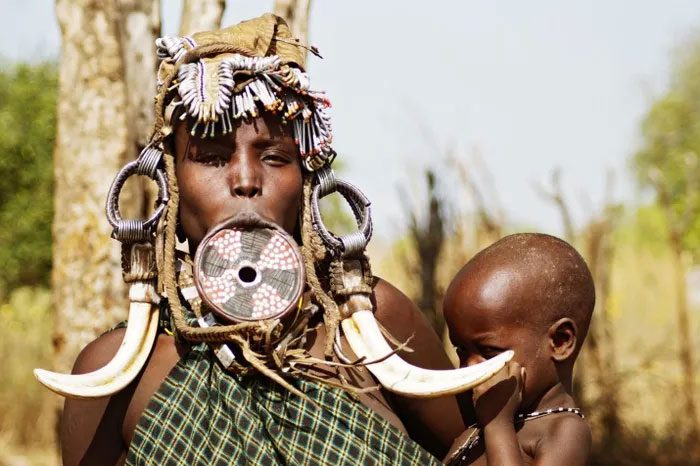Body modification methods have been used by African people for centuries. Many of these practices have been forgotten or abandoned, but lip plating still exists today.
While many may view these modifications as a form of body distortion, those who practice them see them as a part of beauty.



Today, only one tribe in Ethiopia still practices this tradition.
Lip plating is a popular body modification method among many African tribes, particularly among women in Eritrea, Ethiopia, and Sudan. The lip plates, as they are commonly referred to, are made of clay or wood, approximately 5 cm in diameter, and are inserted into the lower lip. About three to four teeth of the wearer are removed to allow for a snug fit of the plate.
When a girl reaches puberty, she will have her first plate fixed. Her lower lip is cut by a female member of her family or tribe, usually her mother.
The degree of stretching is up to the girl. Over the years, she may choose to continue stretching it; thus, larger plates will be continually fixed until the lip can accommodate a plate of about 12 cm.
A controversial opinion regarding lip plating is that those in the community began this practice so that the women of the tribe would appear unattractive to foreigners visiting their land.
Many believe that the plates symbolize the transition of a young girl into womanhood. Others believe that wearing lip plates is a sign of a woman’s self-esteem and value – the wider the lip plates, the more cattle the family can receive in a bride price.
Today, only one tribe in Ethiopia continues this tradition, known as the Mursi tribe. It is surprising to see that amidst civilization and globalization, this tribe has chosen to uphold its traditions.
This makes the Mursi tribe a prominent tourist attraction, as photographers from around the world come to Ethiopia to capture their raw beauty.





















































